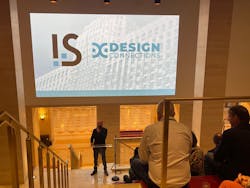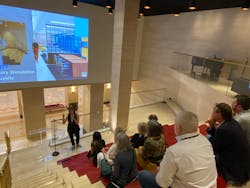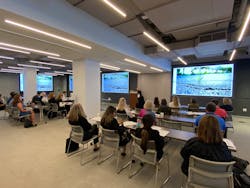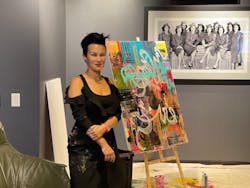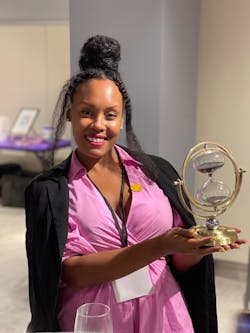Designers Get Involved and Inspired at Design Connections
At every Design Connections event, there’s a saying attendees will hear repeated more than once: “This is not a spectator sport!” That’s because this intimate, invitation-only event was designed to get interior designers and suppliers together to hear from industry experts on the trends influencing the industry; to meet one-on-one about the latest product solutions being offered; to discuss the challenges and insights they share as professionals during in-depth roundtable discussions; and to take part in a creative activity that benefits a local charity.
They decided to dive deeper into the issues and to find solutions. Within the next few months, the newly formed group collaborated with fabric and furniture manufacturers, upholstery distributors, an environmental services and cleaning/disinfection expert, as well as those from several key trade associations. From these partnerships, the Durable Coated Fabric Task Group (DCF TG) was “born.” (Learn more about the DCF TG here.)
This is just one example of the positive results that can happen when great minds in design get together as they did recently at THE MART in Chicago.
Presentations That Inspire
“Neurominorities have neurocognitive functioning that diverges from dominant societal norms,” Sargent explained. “They are wired differently and often their differences can be extraordinary strengths in the workplace.”
But when individuals with impairments find themselves in spaces that don’t support them, it results in a disabling effect. Examples of this in the workplace include:
- Sensory distractions (sounds, smells, visual clutter)
- Cognitive distractions (loss of focus, discomfort)
- Loss of engagement and productivity (presenteeism, poor recall, stress, burnout, dissatisfaction)
The problem isn’t limited to a few, either. In fact, one in seven people are considered neurodiverse, yet fewer than 50% know it, Sargent noted. As such, she underscored the importance of designing workplaces—and by extension, any interior environment—with neurodivergent people in mind. According to the World Health Organization (WHO), physical, cognitive and social exclusion can occur at the point of interaction between the individual and an environment where there is misalignment between them.
“There is a compelling human and business case to be made for ensuring we approach the design of workplaces to help address mindfulness, health, safety, wellbeing and inclusivity,” Sargent added.
Interestingly, a survey by Stantec revealed that a majority of employees are looking forward to returning to the workplace because they miss face-to-face collaboration and social interaction, but the design of most offices hasn’t given them sufficient flexibility of choice. Key findings from the survey include:
- Employees do not envision the dramatic change to the workplace that the industry anticipates
- Employees are generally satisfied with their current workplace, but …
- They want to see the workplace change to allow for more choice
- Expectations and needs vary by industry
Discovering Solutions and Sharing Challenges
Attendees were also invited to meet with manufacturers for a series of 1:1 “speed dating” meetings that introduced them to the most recent product solutions and services they offer as well as to develop new relationships and deepen existing ones. These brief, but impactful meetings allowed designers to get up to date on what’s new as well as provide suppliers with insights into the projects their customers are working on in real time.
Attendees spent the afternoon in groups as part of a series of roundtable discussions hosted in showrooms and meeting spaces throughout THE MART. These in-depth conversations gave designers the opportunity to share their perspectives on the day-to-day challenges they face and provide valuable feedback to suppliers on their products.
Networking and a Night of Giving
It was an evening and event not soon to be forgotten, and all of it would not have been possible were it not for the support of our incredible event sponsors:
About the Author
Robert Nieminen
Chief Content Director
Chief Content Director, Architectural Products, BUILDINGS, and interiors+sources
Robert Nieminen is the Chief Content Director of three leading B2B publications serving the commercial architecture and design industries: Architectural Products, BUILDINGS, and interiors+sources. With a career rooted in editorial excellence and a passion for storytelling, Robert oversees a diverse content portfolio that spans award-winning feature articles, strategic podcast programming, and digital media initiatives aimed at empowering design professionals, facility managers, and commercial building stakeholders.
He is the host of the I Hear Design podcast and curates the Smart Buildings Technology Report, bringing thought leadership to the forefront of innovation in built environments. Robert leads editorial and creative direction for multiple industry award programs—including the Elev8 Design Awards and Product Innovation Awards—and is a recognized voice in sustainability, smart technology integration, and forward-thinking design.
Known for his sharp editorial vision and data-informed strategies, Robert focuses on audience growth, engagement, and content monetization, leveraging AI tools and SEO-driven insights to future-proof B2B publishing.

